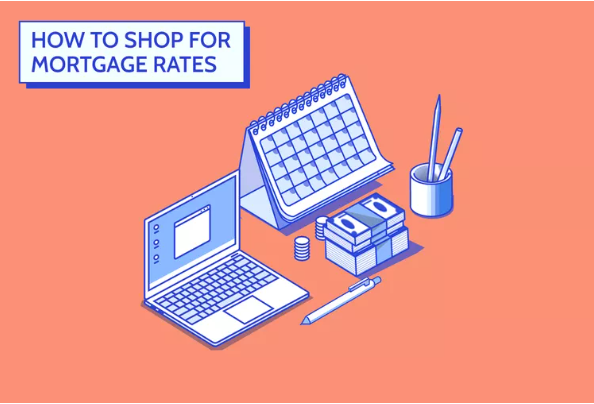How to Shop Around for the Best Mortgage Rates
When it comes to buying a home or refinancing, one of the most important steps you can take is shopping around for the best mortgage rate. A small difference in your interest rate can mean saving thousands or even tens of thousands of dollars over the life of your loan.
Unfortunately, many borrowers make the mistake of accepting the first offer they receive.
Let’s walk through how to smartly compare rates and secure the best deal possible.
Why Shopping Around Matters
Even a 0.5% difference in mortgage rates on a $300,000 loan could save you over $25,000 in interest over 30 years. That’s why taking time to compare offers is not just smart it’s essential.
According to the Consumer Financial Protection Bureau (CFPB), borrowers who get at least three quotes save more money than those who don’t.
Step-by-Step Guide to Finding the Best Mortgage Rates
1. Know Your Credit Score
Your credit score is a key factor in determining your mortgage rate. The higher your score, the lower your rate is likely to be.
Before shopping:
-
Check your credit report for errors
-
Pay down outstanding debts
-
Avoid new credit inquiries if possible
Tip: Aim for a score of 740 or higher to qualify for the best rates.
2. Understand the Types of Mortgage Rates
There are two main rate types:
-
Fixed-Rate Mortgages (FRM): Your interest rate stays the same for the life of the loan.
-
Adjustable-Rate Mortgages (ARM): The rate starts lower but can change over time.
Be sure to compare apples to apples don’t compare a 30-year fixed with a 5/1 ARM unless you understand the differences.
3. Get Pre-Approved First
A mortgage pre-approval gives you a realistic view of what you can borrow and shows lenders you’re a serious buyer. It also helps you compare accurate rate offers, not just estimates.
4. Gather Offers from Multiple Lenders
Don’t settle for one quote. Get offers from:
-
Banks and credit unions
-
Online lenders
-
Mortgage brokers
Be sure to request a Loan Estimate form, which shows the interest rate, monthly payment, fees, and closing costs in a standardized format. This makes it easier to compare.
Tip: Try to shop within a 45-day window so that all credit checks count as one inquiry on your credit report.
5. Compare More Than Just the Rate
The lowest rate isn’t always the best deal. Pay attention to:
-
Origination fees
-
Points (prepaid interest to lower your rate)
-
APR (Annual Percentage Rate) which includes both the interest rate and fees
-
Closing costs
Sometimes a lender offers a lower rate but charges higher upfront fees so look at the total cost over time.
6. Ask About Rate Locks
Rates can fluctuate daily. Ask lenders if they offer a rate lock to secure your quoted rate while you finalize the loan.
Typical rate locks last 30 to 60 days. Some lenders may charge a fee, while others include it for free.
7. Negotiate!
Yes, you can negotiate your mortgage rate and fees. Lenders want your business don’t be afraid to ask them to match or beat a competitor’s offer.
Provide proof of a better rate from another lender to strengthen your case.
8. Consider Working with a Mortgage Broker
A broker can compare rates across multiple lenders for you. This can be especially useful if:
-
You have a complex financial situation
-
You want someone to do the legwork
-
You want access to lenders you may not find on your own
Just be sure to ask how the broker is compensated.
✅ Final Tips
-
Don’t rush the process. Take time to compare.
-
Use online tools like mortgage comparison calculators to see your total cost over time.
-
Review all paperwork carefully before signing.
Final Thought on How to Shop Around for the Best Mortgage Rates
Shopping around for the best mortgage rate might take a few hours of your time but it can save you years of extra payments and thousands of dollars in interest.
So don’t just go with your bank by default. Explore your options, compare offers side by side, and make the most informed decision for your financial future.


